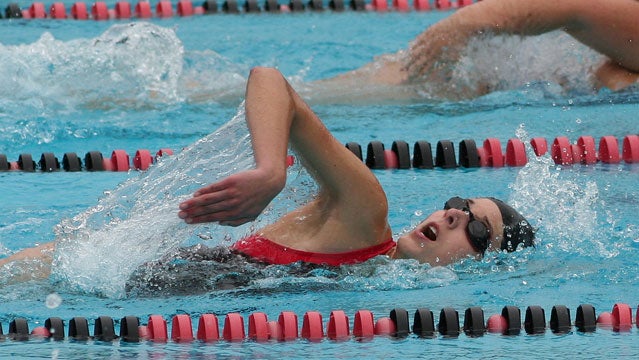When comparing different activities in regard to fitness benefits, we are really talking about how much energy is required for each one. You can imagine that this varies dramatically depending on age, sex, size, weight, body composition, fitness level, and exercise intensity. Ultimately though, we can estimate how many calories are burned during exercise by measuring the amount of oxygen consumed during it.
If you are moderately well trained and competent in the activities that you are choosing, and you are going to exercise just as intensely during each session, then it comes down to the amount of muscle mass involved and how long you perform the exercise for. Don’t look at it as 2000 meters of swimming equals one mile of running. Rather, gauge your exercise by the amount of time spent on task.
In swimming, skill and technique significantly impact energy expenditure. Most people know how to run and ride a bike with reasonable economy, but it takes years of practice to be able to swim properly. Therefore, someone who is very inefficient in the water may be burning more calories per minute than someone who has beautiful technique. Also, experience comes into play. If you are not familiar with swimming, it may feel like you’re working extremely hard and burning a lot of calories, but in reality you may only working at a moderate intensity. One more difference with swimming is that if you’re monitoring your heart rate, you’ll see lower heart rates at given intensity levels, compared with running or cycling. This is due to the physiological response to exercising in a horizontal body position, and in a buoyant environment. The heart can pump more blood easier since it doesn’t have to overcome the forces of gravity to distribute it, as it does when you’re standing up.
I’ll give you some general values for an average-sized adult (125-150 lb woman, 140-170 pound man), in kilocalories burned per minute of exercise (kcal/min), which directly relates to the number of calories you eat each day. Realize that for larger and older individuals, and higher intensities the value will be at or above the high end of the given range. Likewise, for smaller, younger, or easier exercise intensities, the value will be at or below the low end of the given range.
Swimming:
At a speed of 1:15 per 100 yards, you’re likely burning between 15 and 25 kcals per minute of actual swimming time. Therefore, one hour at this intensity would burn roughly 900-1500 kcals. These values confirm that swimming is one of the best all around exercises available, due to the large number of muscle groups heavily involved.
Running:
Running at 8:00 per mile will generally use 11-20 kcals per minute, while a speed of 6:00 per mile (fast!) will use 14-25 kcals per minute. So an hour at 8:00 per mile garners a consumption of 660-1200 kcals, while an hour at 6:00 per mile uses between 840 and 1500 kcals. Values are slightly lower than those for swimming since you re not using your upper body muscles to the same degree as while swimming.
Cycling:
At 10 miles per hour, you could expect to use anywhere between 6 and 10 kcals per minute, while at 20 miles per hour you may see a consumption of 15-20 kcals per minute. So for an hour of cycling, this ranges from 360 to 600 kcals at the lower intensity, to 900-1200 kcals at the higher intensity.

